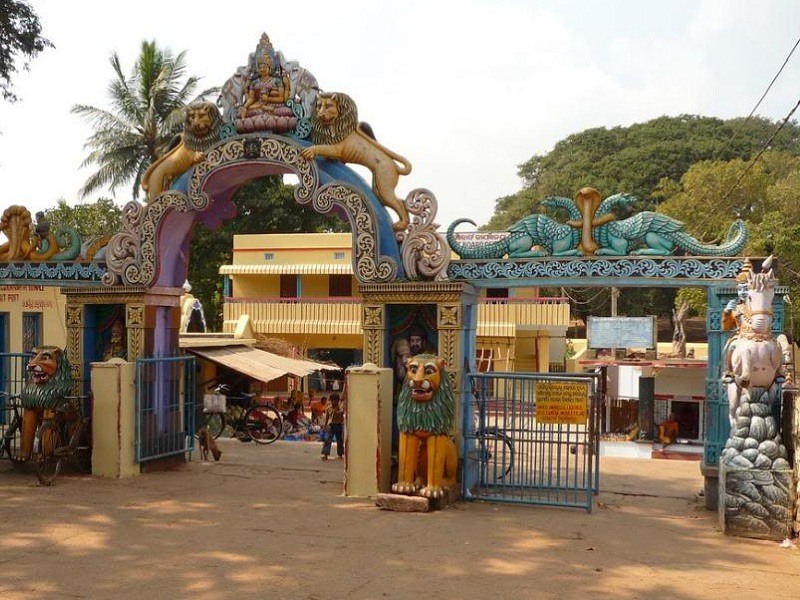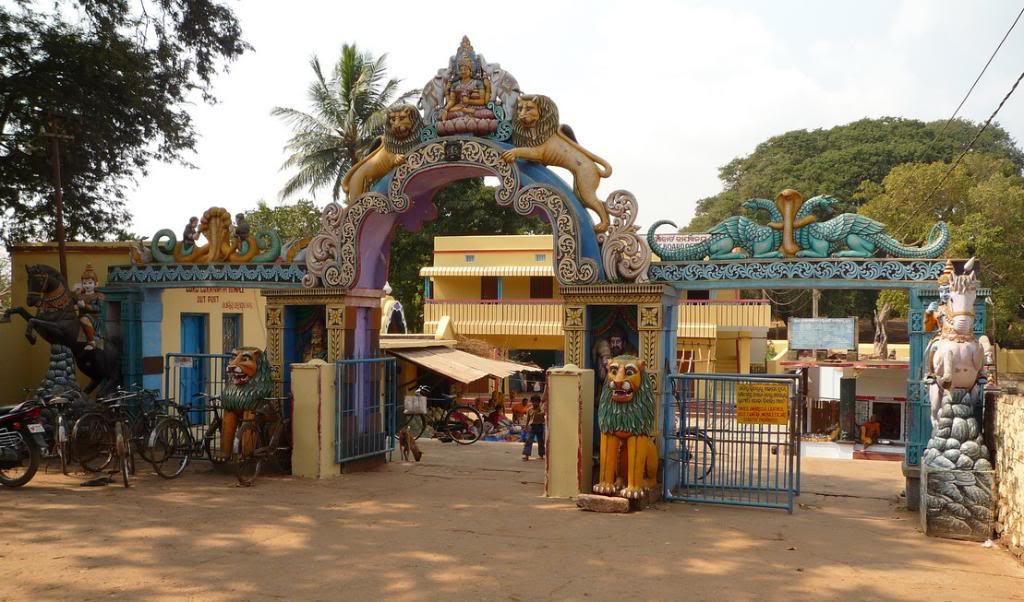First topic message reminder :


পুরী (Puri)-
..... বাঙালির চিরকালীন নস্টালজিয়া রয়েছে পুরীকে ঘিরে। ইতিহাসেও বহু প্রাচীনকাল থেকেই পুরী বা পুরুষোত্তম ক্ষেত্রের উল্লেখ পাওয়া যায়। ওড়িশার এই একান্ত বাঙালিপ্রবণ শহরটির মূল আকর্ষণ দীর্ঘ সমুদ্রতট আর জগন্নাথ দেবের মন্দির। পুরীর বিচগুলির মধ্যে স্বর্গদ্বারের প্রশস্তিই সবচেয়ে বেশি। পুরীর সমুদ্রে স্নান করার ব্যাপক চল থাকলেও সমুদ্র অনেকসময়ই বেশ বিপজ্জনক হয়ে ওঠে, তাই সাবধানতা নেওয়া উচিত। বেড়ানোর সেরা সময় অক্টোবর থেকে ফেব্রুয়ারী। তবে সারাবছরই ভিড় লেগে থাকে।
ভারতের হিন্দুদের চারধাম অর্থাৎ বদরীনাথ, দ্বারকা, রামেশ্বরম এবং পুরী। পুরাণের কথায়, শ্রীজগন্নাথ বদরীতে স্নান করে দ্বারকায় অঙ্গসজ্জা করেন। তারপর পুরীতে অন্নভোগ সেরে রামেশ্বরমে শয়ান বা বিশ্রাম নেন।
কথিত আছে, আদিতে সূর্যবংশীয় রাজা অবন্তীরাজ ইন্দ্রদ্যুম্ন স্বপ্নাদেশ পেয়ে জগন্নাথ মন্দিরটি তৈরি করেন। বর্তমান মন্দিরটি ১১০০ খ্রীষ্টাব্দে রাজা অনন্তবর্মন শুরু করলেও তাঁর পৌত্র রাজা অনঙ্গ ভীমদেবের আমলে ১১৯৮ খ্রীষ্টাব্দে সমাপ্ত হয়। গর্ভগৃহ বা মূল মন্দিরের উচ্চতা ১৯২ফুট। প্রবেশদ্বার চারটি- সিংহদ্বার, হস্তীদ্বার, অশ্বদ্বার ও খাঞ্জাদ্বার। এরমধ্যে সিংহদ্বারটি প্রধান। এখানেই কোনারক থেকে আনা অরুণ স্তম্ভটি রয়েছে। পূর্বদিকে মূল প্রবেশদ্বার বা সিংহদ্বার। ৬৭০ফুট দীর্ঘ ও ৬৪০ফুট চওড়া মন্দিরটি ওড়িশি শিল্পধাঁচে চার ভাগে বিভক্ত- ভোগমন্ডপ, নাটমন্দির, জগমোহন ও দেউল।
কথিত আছে, স্বপ্নাদেশে সমুদ্র থেকে পাওয়া কাঠের সাহায্যে জগন্নাথ, বলরাম ও সুভদ্রার মূর্তিটি তৈরি। মন্দিরের বেদিতে বলরাম, জগন্নাথ ও সুভদ্রার মূর্তির সঙ্গে রয়েছে লক্ষ্মী, সরস্বতী ও নীলমাধবের মূর্তিও। বিষ্ণুরই আরেক রূপ জগন্নাথ। মন্দিরচত্বরে আরও চল্লিশটি ছোটো মন্দির আছে। মন্দিরে শুধুমাত্র হিন্দুদের প্রবেশাধিকার আছে। ক্যামেরা, মোবাইল, চামড়ার কোনও জিনিস সঙ্গে নিয়ে ঢোকা নিষেধ।
পুরী শহরের আশেপাশে স্থানীয় দ্রষ্টব্যগুলি রিকশা বা অটোতে ঘুরে দেখে নেওয়া যায়। এরমধ্যে রয়েছে চক্রতীর্থ বা স্বর্গদ্বার, কানপাতা হনুমান, বিদুরপুরী, মহোদধি, সুদামাপুরী, সোনার গৌরাঙ্গ মঠ, শংকরাচার্য মঠ, কবির মঠ, নানক মঠ, রাধাকান্ত মঠ বা কাশীমিশ্র ভবন, সিদ্ধবকুল মঠ, শ্বেতগঙ্গা, শ্রীশ্রীগুণ্ডিচা মন্দির বা মাসির বাড়ি বা বাগানবাড়ি, দশাবতার মঠ, তোতা গোপীনাথজির মন্দির, কপালমোচন মন্দির ইত্যাদি।
পুরী থেকে ভুবনেশ্বরের পথে ১৭কিমি দূরে সাক্ষীগোপাল। দেবতা এখানে শ্রীকৃষ্ণ রূপে পূজিত হন। এই পথেই পুরী থেকে ৯কিমি দূরে চন্দনপুর থেকে আরও দেড় কিমি এগিয়ে পটচিত্রের জন্য খ্যাত রঘুরাজপুর।
সারাদিনের কন্ডাক্টেড ট্যুরে দেখে নেওয়া যায় কোণারক, নন্দনকানন, ভুবনেশ্বরের মন্দিরগুলো, খণ্ডগিরি, উদয়গিরি, ধৌলি বা ধবলেশ্বর ইত্যাদি।
যাওয়াঃ- নিকটতম রেলস্টেশন পুরী। ওড়িশার প্রতিবেশি রাজ্যগুলির বিভিন্ন জায়গা থেকে ও ওড়িশার বিভিন্ন শহরের সঙ্গে বাস যোগাযোগ রয়েছে পুরীর। পুরী থেকে কন্ডাক্টেড ট্যুরে কোনারক, উদয়গিরি-খণ্ডগিরি ও ভুবনেশ্বর বেড়িয়ে নেওয়া যায়।
থাকাঃ- পুরীর সমুদ্র ও জগন্নাথদেবের মন্দিরকে কেন্দ্র করে নানা বাজেটের অজস্র হোটেল ছড়িয়ে রয়েছে পুরো এলাকা জুড়ে। ধর্মশালাও আছে বেশ কয়েকটি। সস্তায় থাকার জন্য রয়েছে নানান সংস্থার হলিডে হোমগুলি। পুরীর এস টি ডি কোডঃ- ০৬৭৫২।
কেনাকাটাঃ- সমুদ্রের ধার জুড়ে শাঁখ, ঝিনুক, পাথরের নানান পসরা নিয়ে হাজির দোকানীরা। শহরেও মিলবে হস্তশিল্প বা তাঁতশিল্পের অনেক দোকান। কটকি, সম্বলপুরী শাড়ি, রঘুরাজপুরের পটশিল্প, পিপলির অ্যাপ্লিক, শাঁখ, ঝিনুক অথবা পাথরের ঘরসাজানোর জিনিস -এসবই হতে পারে পুরী বেড়ানোর স্মারক।
খাওয়াদাওয়াঃ- পুরী বেড়িয়ে এসে সবাইকে আর কিছু নাহোক গজা কিম্বা জগন্নাথের মহাপ্রসাদ চেনাপরিচিত সবাইকে দেওয়া বাঙালির এক রীতি। মন্দিরে পুজোর বিনিময়ে প্রসাদতো মেলেই, মন্দিরের আনন্দবাজারেও কিনতে পারা যায় এই মহাপ্রসাদ।
উৎসবঃ- পুরীর সেরা উৎসব জগন্নাথদেবের রথযাত্রা। আষাঢ় মাসে এই রথযাত্রা উৎসবে দেশি-বিদেশি লক্ষাধিক পুণ্যার্থী আসেন।
ডিসেম্বর মাসে স্বর্গদ্বার লাগোয়া সৈকতে অনুষ্ঠিত হয় বিচ ফেস্টিভাল।
.
...
.
#puri #orissa #Odisha #sealda #Howrah #jagannath #temple #lingaraj #buddha #konark #sun
#পুরী #উড়িষ্যা#ওড়িশা #শিয়ালদা #হাওড়া #জগন্নাথ #লিঙ্গরাজ #বুদ্ধ #কোনারক #সূর্য #মন্দির.
Last edited by Admin on Fri Mar 02, 2018 7:00 pm; edited 2 times in total


পুরী (Puri)-
..... বাঙালির চিরকালীন নস্টালজিয়া রয়েছে পুরীকে ঘিরে। ইতিহাসেও বহু প্রাচীনকাল থেকেই পুরী বা পুরুষোত্তম ক্ষেত্রের উল্লেখ পাওয়া যায়। ওড়িশার এই একান্ত বাঙালিপ্রবণ শহরটির মূল আকর্ষণ দীর্ঘ সমুদ্রতট আর জগন্নাথ দেবের মন্দির। পুরীর বিচগুলির মধ্যে স্বর্গদ্বারের প্রশস্তিই সবচেয়ে বেশি। পুরীর সমুদ্রে স্নান করার ব্যাপক চল থাকলেও সমুদ্র অনেকসময়ই বেশ বিপজ্জনক হয়ে ওঠে, তাই সাবধানতা নেওয়া উচিত। বেড়ানোর সেরা সময় অক্টোবর থেকে ফেব্রুয়ারী। তবে সারাবছরই ভিড় লেগে থাকে।
ভারতের হিন্দুদের চারধাম অর্থাৎ বদরীনাথ, দ্বারকা, রামেশ্বরম এবং পুরী। পুরাণের কথায়, শ্রীজগন্নাথ বদরীতে স্নান করে দ্বারকায় অঙ্গসজ্জা করেন। তারপর পুরীতে অন্নভোগ সেরে রামেশ্বরমে শয়ান বা বিশ্রাম নেন।
কথিত আছে, আদিতে সূর্যবংশীয় রাজা অবন্তীরাজ ইন্দ্রদ্যুম্ন স্বপ্নাদেশ পেয়ে জগন্নাথ মন্দিরটি তৈরি করেন। বর্তমান মন্দিরটি ১১০০ খ্রীষ্টাব্দে রাজা অনন্তবর্মন শুরু করলেও তাঁর পৌত্র রাজা অনঙ্গ ভীমদেবের আমলে ১১৯৮ খ্রীষ্টাব্দে সমাপ্ত হয়। গর্ভগৃহ বা মূল মন্দিরের উচ্চতা ১৯২ফুট। প্রবেশদ্বার চারটি- সিংহদ্বার, হস্তীদ্বার, অশ্বদ্বার ও খাঞ্জাদ্বার। এরমধ্যে সিংহদ্বারটি প্রধান। এখানেই কোনারক থেকে আনা অরুণ স্তম্ভটি রয়েছে। পূর্বদিকে মূল প্রবেশদ্বার বা সিংহদ্বার। ৬৭০ফুট দীর্ঘ ও ৬৪০ফুট চওড়া মন্দিরটি ওড়িশি শিল্পধাঁচে চার ভাগে বিভক্ত- ভোগমন্ডপ, নাটমন্দির, জগমোহন ও দেউল।
কথিত আছে, স্বপ্নাদেশে সমুদ্র থেকে পাওয়া কাঠের সাহায্যে জগন্নাথ, বলরাম ও সুভদ্রার মূর্তিটি তৈরি। মন্দিরের বেদিতে বলরাম, জগন্নাথ ও সুভদ্রার মূর্তির সঙ্গে রয়েছে লক্ষ্মী, সরস্বতী ও নীলমাধবের মূর্তিও। বিষ্ণুরই আরেক রূপ জগন্নাথ। মন্দিরচত্বরে আরও চল্লিশটি ছোটো মন্দির আছে। মন্দিরে শুধুমাত্র হিন্দুদের প্রবেশাধিকার আছে। ক্যামেরা, মোবাইল, চামড়ার কোনও জিনিস সঙ্গে নিয়ে ঢোকা নিষেধ।
পুরী শহরের আশেপাশে স্থানীয় দ্রষ্টব্যগুলি রিকশা বা অটোতে ঘুরে দেখে নেওয়া যায়। এরমধ্যে রয়েছে চক্রতীর্থ বা স্বর্গদ্বার, কানপাতা হনুমান, বিদুরপুরী, মহোদধি, সুদামাপুরী, সোনার গৌরাঙ্গ মঠ, শংকরাচার্য মঠ, কবির মঠ, নানক মঠ, রাধাকান্ত মঠ বা কাশীমিশ্র ভবন, সিদ্ধবকুল মঠ, শ্বেতগঙ্গা, শ্রীশ্রীগুণ্ডিচা মন্দির বা মাসির বাড়ি বা বাগানবাড়ি, দশাবতার মঠ, তোতা গোপীনাথজির মন্দির, কপালমোচন মন্দির ইত্যাদি।
পুরী থেকে ভুবনেশ্বরের পথে ১৭কিমি দূরে সাক্ষীগোপাল। দেবতা এখানে শ্রীকৃষ্ণ রূপে পূজিত হন। এই পথেই পুরী থেকে ৯কিমি দূরে চন্দনপুর থেকে আরও দেড় কিমি এগিয়ে পটচিত্রের জন্য খ্যাত রঘুরাজপুর।
সারাদিনের কন্ডাক্টেড ট্যুরে দেখে নেওয়া যায় কোণারক, নন্দনকানন, ভুবনেশ্বরের মন্দিরগুলো, খণ্ডগিরি, উদয়গিরি, ধৌলি বা ধবলেশ্বর ইত্যাদি।
যাওয়াঃ- নিকটতম রেলস্টেশন পুরী। ওড়িশার প্রতিবেশি রাজ্যগুলির বিভিন্ন জায়গা থেকে ও ওড়িশার বিভিন্ন শহরের সঙ্গে বাস যোগাযোগ রয়েছে পুরীর। পুরী থেকে কন্ডাক্টেড ট্যুরে কোনারক, উদয়গিরি-খণ্ডগিরি ও ভুবনেশ্বর বেড়িয়ে নেওয়া যায়।
থাকাঃ- পুরীর সমুদ্র ও জগন্নাথদেবের মন্দিরকে কেন্দ্র করে নানা বাজেটের অজস্র হোটেল ছড়িয়ে রয়েছে পুরো এলাকা জুড়ে। ধর্মশালাও আছে বেশ কয়েকটি। সস্তায় থাকার জন্য রয়েছে নানান সংস্থার হলিডে হোমগুলি। পুরীর এস টি ডি কোডঃ- ০৬৭৫২।
কেনাকাটাঃ- সমুদ্রের ধার জুড়ে শাঁখ, ঝিনুক, পাথরের নানান পসরা নিয়ে হাজির দোকানীরা। শহরেও মিলবে হস্তশিল্প বা তাঁতশিল্পের অনেক দোকান। কটকি, সম্বলপুরী শাড়ি, রঘুরাজপুরের পটশিল্প, পিপলির অ্যাপ্লিক, শাঁখ, ঝিনুক অথবা পাথরের ঘরসাজানোর জিনিস -এসবই হতে পারে পুরী বেড়ানোর স্মারক।
খাওয়াদাওয়াঃ- পুরী বেড়িয়ে এসে সবাইকে আর কিছু নাহোক গজা কিম্বা জগন্নাথের মহাপ্রসাদ চেনাপরিচিত সবাইকে দেওয়া বাঙালির এক রীতি। মন্দিরে পুজোর বিনিময়ে প্রসাদতো মেলেই, মন্দিরের আনন্দবাজারেও কিনতে পারা যায় এই মহাপ্রসাদ।
উৎসবঃ- পুরীর সেরা উৎসব জগন্নাথদেবের রথযাত্রা। আষাঢ় মাসে এই রথযাত্রা উৎসবে দেশি-বিদেশি লক্ষাধিক পুণ্যার্থী আসেন।
ডিসেম্বর মাসে স্বর্গদ্বার লাগোয়া সৈকতে অনুষ্ঠিত হয় বিচ ফেস্টিভাল।
.
...
.
#puri #orissa #Odisha #sealda #Howrah #jagannath #temple #lingaraj #buddha #konark #sun
#পুরী #উড়িষ্যা#ওড়িশা #শিয়ালদা #হাওড়া #জগন্নাথ #লিঙ্গরাজ #বুদ্ধ #কোনারক #সূর্য #মন্দির.
Last edited by Admin on Fri Mar 02, 2018 7:00 pm; edited 2 times in total























